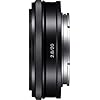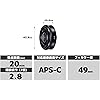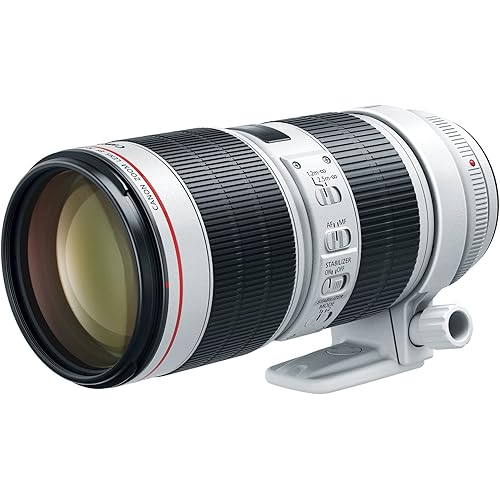








Buy Now, Pay Later
- – Up to 36-month term if approved
- – No impact on credit
- – Instant approval decision
- – Secure and straightforward checkout
Ready to go? Add this product to your cart and select a plan during checkout.
Payment plans are offered through our trusted finance partners Klarna, Affirm, Afterpay, Apple Pay, and PayTomorrow. No-credit-needed leasing options through Acima may also be available at checkout.
Learn more about financing & leasing here.
30-day refund/replacement
To qualify for a full refund, items must be returned in their original, unused condition. If an item is returned in a used, damaged, or materially different state, you may be granted a partial refund.
To initiate a return, please visit our Returns Center.
View our full returns policy here.
Recently Viewed
Features
- Superior Image Quality
- Minimum Focus Distance : 0.66 feet (0.2 m), Maximum Magnification ratio : 0.12x
- Focal Length- 20 mm, Compact Length; Lens not Zoomable
- Superb value and performance. Angle of View (APS-C) -70. Maximum aperture (F) - 2.8. 35 mm equivalent focal length (APS-C) - 11.82 inch
- Broaden your view with a wide angle: From a vast cliff to a stretching sandy beach, fit everything in with a 20 mm wide angle. Angle of View (APS-C): 70
Description
20mm F2.8 Prime Lens Not only will the 20mm (30mm in 35mm full-frame format) focal length and F2.8 maximum aperture appeal to experienced photographers, but the outstanding resolution of this lens will satisfy their most stringent image quality requirements as well. Three aspheric elements help to achieve superb contrast and resolution right out to the image edges, while simultaneously enabling a compact 20.4 mm-thick pancake design that makes for a portable combination with compact E-mount cameras. When changing your aperture to defocus the background, the light sources appear blurred. This ‘bokeh’ effect of the blurred background can be enhanced with circular aperture blades used in this lens. Conventional aperture blades have flat sides creating unappealing polygonal shaped defocussed points of light. α lenses overcome this problem through a unique design that keeps the aperture almost perfectly circular from its wide-open setting to when it is closed by 2 stops. Smoother, more natural defocusing can be obtained as a result. Aspherical lens design dramatically reduces spherical aberration while also reducing lens size and weight. Spherical aberration is a slight misalignment of the light rays projected on the image plane. This is caused by differences in refraction at different points on conventional spherical lenses which degrade image quality in large-aperture lenses. Specially shaped “aspherical” elements near the diaphragm restore alignment of light rays at the image plane, maintaining high sharpness and contrast even at maximum aperture and can also be used at other points in the optical path to reduce distortion. Well-designed aspherical elements can reduce the total number of elements required in the lens, thus reducing overall size and weight. Advanced Aspherical (AA) elements are an evolved variant, featuring an extremely high thickness ratio between the center and periphery. AA elements are exceedingly difficult to produce, relying on the most advanced molding technology to consistently and precisely achieve the required shape and surface accuracy, resulting in significantly improved image accuracy and quality. Only the rear groups of the optical system move to focus the lens, which allows for speedy AF operation and a shorter minimum focusing distance. Since the front of the lens does not rotate, operability is improved when shooting with a polarizing filter attached. 2013 Sony Electronics All rights reserved. Reproduction in whole or in part without written permission is prohibited. Sony is not responsible for typographic and photographic errors. Features and specifications are subject to change without notice. Sony, BIONZ, BRAVIA, BRAVIA Sync, Cyber-shot, Exmor, InfoLITHIUM, Memory Stick PRO Duo, Memory Stick Duo, the Memory Stick logo, Optical SteadyShot, Remote Commander, Smile Shutter, Stamina, SteadyShot, Theatre Sync, TruBlack, and Xtra Fine LCD are trademarks of Sony. Microsoft, Windows, and Windows Vista are trademarks of Microsoft Corporation. Mac OS and iMovie are trademarks of Apple Computers, HDMI is a trademark of HDMI Licensing . All other trademarks are trademarks of their respective owners. From the Manufacturer E 20mm F2.8 Wide-Angle Prime LensNot only will the 20mm (30mm in 35mm full-frame format) focal length and F2.8 maximum aperture appeal to experienced photographers, but the outstanding resolution of this lens will satisfy their most stringent image quality requirements as well. Three aspheric elements help to achieve superb contrast and resolution right out to the image edges, while simultaneously enabling a compact 20.4 mm-thick pancake design that makes for a portable combination with compact E-mount cameras.TechnologyCircular ApertureWhen changing your aperture to defocus the background, the light sources appear blurred. This ‘bokeh’ effect of the blurred background can be enhanced with circular aperture blades used in this lens. Conventional aperture blades have flat sides creating unappealing polygonal shaped defocussed points of light. α lenses overcome this problem through a unique design that keeps the aperture almost perfectly circular from its wide-open setting to when it is closed by 2 stops. Smoother, more natural defocusing can be obtained as a result.Aspherical lens elementsAspherical lens design dramatically reduces spherical aberration while also reducing lens size and weight. Spherical aberration is a slight misalignment of the light rays projected on the image plane. This is caused by differences in refraction at different points on conventional spherical lenses which degrade image quality in large-aperture lenses. Specially shaped “aspherical” elements near the diaphragm restore alignment of light rays at the image plane, maintaining high sharpness and contrast even at maximum aperture and can also be used at other points in the optical path to reduce distortion. Well-designed aspherical elements can reduce the total number of elements required in the lens, thus reducing overall size and weight. Advanced Aspherical (AA) elements are an evolved variant, featuring an extremely high thickness ratio between the center and periphery. AA elements are exceedingly difficult to produce, relying on the most advanced molding technology to consistently and precisely achieve the required shape and surface accuracy, resulting in significantly improved image accuracy and quality.Additional FeaturesRear focusing elementsOnly the rear groups of the optical system move to focus the lens, which allows for speedy AF operation and a shorter minimum focusing distance. Since the front of the lens does not rotate, operability is improved when shooting with a polarizing filter attached.2013 Sony Electronics Inc. All rights reserved. Reproduction in whole or in part without written permission is prohibited. Sony is not responsible for typographic and photographic errors. Features and specifications are subject to change without notice. Sony, BIONZ, BRAVIA, BRAVIA Sync, Cyber-shot, Exmor, InfoLITHIUM, Memory Stick PRO Duo, Memory Stick Duo, the Memory Stick logo, Optical SteadyShot, Remote Commander, Smile Shutter, Stamina, SteadyShot, Theatre Sync, TruBlack, and Xtra Fine LCD are trademarks of Sony. Microsoft, Windows, and Windows Vista are trademarks of Microsoft Corporation. Mac OS and iMovie are trademarks of Apple Computers, Inc. HDMI is a trademark of HDMI Licensing LLC. All other trademarks are trademarks of their respective owners.
Brand: Sony
Focal Length Description: 20 mm
Lens Type: Wide Angle
Compatible Mountings: Sony E
Camera Lens Description: 20 month
Product Dimensions: 0.79 x 2.48 x 2.48 inches
Item Weight: 2.43 ounces
Item model number: SEL20F28
Is Discontinued By Manufacturer: No
Date First Available: January 22, 2013
Manufacturer: Sony
Country of Origin: Thailand
Frequently asked questions
To initiate a return, please visit our Returns Center.
View our full returns policy here.
- Klarna Financing
- Affirm Pay in 4
- Affirm Financing
- Afterpay Financing
- PayTomorrow Financing
- Financing through Apple Pay
Learn more about financing & leasing here.
Top Amazon Reviews





























